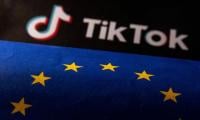The road to competitiveness
Despite going up four positions, Pakistan continues to rank low on the score of competitiveness. The 2016-2017 Report of the World Economic Forum (WEF) puts Pakistan at 122nd (out of 138 nations) on the Global Competitiveness Index (GCI).
Over the last three years, the national economy’s GCI ranking is on the rise incrementally. From 133rd in 2013-14, the ranking improved to 129th in 2014-15 and further to 126th in 2015-16. However, the current position is still far below the 92nd that the economy attained in 2007-08. Pakistan’s position on the GCI remains the lowest in South Asia among the reported countries: India (39), Sri Lanka (71), Bhutan (97), Nepal (98), and Bangladesh (106). The last three countries are classified as the least developed by the UN.
The GCI comprises twelve indicators or pillars encompassing a country’s socio-political, regulatory, economic, and technological institutions, policies and factors, which together determine how productive and resilient an economy is. These pillars are classified into three broad categories – basic requirements (institutions, infrastructure, macroeconomic environment, and health and primary education); efficiency enhancers (higher education and training, goods market efficiency, labour market efficiency, financial market development, technological readiness, and market size); and innovation and sophistication factors (business sophistication, and innovation).
On the whole, Pakistan’s performance (126th) is the worst on basic requirements’ indicators, with a slightly better position on efficiency-enhancers (113rd) and a much better ranking on innovation and sophistication factors (85th). These relative rankings point out fundamental or structural weaknesses in the economy and the related institutional framework, which need to be overcome before significant progress can be registered on secondary or ‘higher’ indicators.
The institutions comprise not only the legal and policy framework but the government’s attitude towards economic and business affairs as well. The institutions may hinder or promote growth and investment, may reward or penalise efficiency and productivity and may apportion costs and benefits squarely or unfairly.
In 2007-08, Pakistan’s ranking on institutions was 81st, which in 2016-17 has slipped to 111th. The most obvious problem associated with the institutional framework is the high economic cost of terrorism, on which Pakistan is placed globally at 134th, followed by organised crime (130th), overall business cost of organised crime and violence (125th), efficiency of corporate boards (123rd), protection of property rights (122nd), auditing and reporting standards (121st), and reliability of police service (118th).
However, Pakistan’s position is far better on investors’ protection (25th), and fairly better on favouritism in official decision making (73rd) and burden of government regulations on businesses (75th).
Terrorism has been the country’s Achilles’ heel for nearly two decades. Since 2001-02, the cumulative economic cost of terrorism has exceeded $118 billion, as reported by the latest edition of the Pakistan Economic Survey. The economic losses caused by the militancy are of two types. One, scarce resources have been diverted from development or productive purposes to security-related expenditure. Two, normal economic and commercial activities have been disrupted on account of high political risk and increased cost of doing business.
The silver lining, however, is the government’s commitment to weed out the militancy evident from Operation Zarb-e-Azb launched in 2014, as a result of which the number of terrorism-related incidents has come down considerably over the last two years. That said, the war on terror is drawn out and it is likely to take several years to significantly improve Pakistan’s GCI ranking on the indicator of economic cost of terrorism – though incremental progress can be made.
Organised crime presents a similar problem, particularly in the largest city of Karachi. For years gangs and mafias have run rampage in the country’s commercial hub. The infamous crime-politics nexus, drawing sustenance from the ethnic demographics of the city, has had a big role in handing over Karachi to the outlaws. Currently law-enforcement agencies are carrying out a clean-up operation in Karachi. At the same time, very significant political developments have taken place the city of late. Whether these developments would auger well or bad for Karachi is anybody’s guess. However, it can safely be said that clearing the metropolis’ mess, essential for putting the economy back on track, will take quite some time.
The second pillar in the basic requirements category is infrastructure, on which the national ranking has gone down from 72th in 2007-08, to 116th in 2016-17. Understandably, one of the major issues is the poor quality of electricity supply on which the country is ranked 121st. Severe power outages have told upon production and, by implication exports, increased the cost of doing business and hampered the entire supply chain.
A number of projects of varying duration, including those under the umbrella of the China-Pakistan Economic Corridor (CPEC,) are afoot or being conceived to bridge the electricity demand-supply gap. An improved management of the power sector, particularly sorting out the circular debt, can be handy in the short-run.
Pakistan has been in the throes of macroeconomic instability over the past several years, forcing the government to seek IMF assistance twice in six years (2008 and 2013). Not surprisingly, the country’s latest ranking on the macroeconomic environment pillar has scaled down to 116th from 101th in 2007-08. Pakistan is on the verge of completing the IMF’s three-year $6.4 billion programme and the government claims that the economic picture is rosy enough.
Yes, compared with previous years, the economy is looking up. Yet most economic fundamentals remain unsound: fiscal deficit (5.3 percent of GDP), public debt (64.4 percent of GDP), gross national savings (14.1 percent of GDP) and real sector investment (13.6 percent of GDP). As per World Bank data, Pakistan’s investment-to-GDP level is one of the lowest among the developing countries and the lowest in South Asia: India (35), Bhutan (56), Sri Lanka (30), Bangladesh (27), and Nepal (35).
Finally on the list is the human capital related indicator of basic health and education, where the country is ranked 129th. The major sub indicators along with their world ranking are: net primary education enrolment rate (133rd) infant mortality rate (131st), incidence of tuberculosis (122nd), quality of primary education (115th), and life expectancy (108th).
In the words of the WEF’s Global Competitiveness Report 2016-17, “Pakistan is also the only economy that fails to improve its macro-economic environment and health and primary education levels, falling behind other South Asian economies.” By all accounts, Pakistan has to go a long way on the road to competiveness. The foremost step will be to put in place strong and credible institutions.
The writer is a graduate from a Western European university.
Email: hussainhzaidi@gmail.com
-
 Taiwan, TSMC To Expand US Investment: A Strategic Move In Global AI Chip Race
Taiwan, TSMC To Expand US Investment: A Strategic Move In Global AI Chip Race -
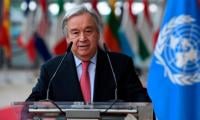 UN Chief Lashes Out At Countries Violating International Law; Warns 'new Geopolitics' Could Jeopardize World Order
UN Chief Lashes Out At Countries Violating International Law; Warns 'new Geopolitics' Could Jeopardize World Order -
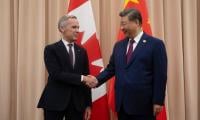 Carney Meets Xi In Beijing: Key Developments Revealed In The New Canada-China Trade Roadmap
Carney Meets Xi In Beijing: Key Developments Revealed In The New Canada-China Trade Roadmap -
 WhatsApp Adds New Status Privacy Check For Who Can See Your Updates
WhatsApp Adds New Status Privacy Check For Who Can See Your Updates -
 Prince Harry Takes On Dangerous Mission In 2026
Prince Harry Takes On Dangerous Mission In 2026 -
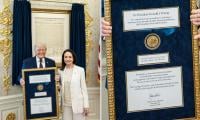 Trump Accepts Nobel Peace Medal From Machado: What It Means For Venezuela Politics?
Trump Accepts Nobel Peace Medal From Machado: What It Means For Venezuela Politics? -
 Late-night Snacking Linked To Higher Risk Of Liver Disease
Late-night Snacking Linked To Higher Risk Of Liver Disease -
 John Mellencamp Gives Update On Daughter Teddi's Health Struggles: 'She's Suffering'
John Mellencamp Gives Update On Daughter Teddi's Health Struggles: 'She's Suffering' -
 ‘Disturbing Developments’ Start To Follow Prince William, Kate: ‘This Has The Makings Of A Crisis’
‘Disturbing Developments’ Start To Follow Prince William, Kate: ‘This Has The Makings Of A Crisis’ -
 Pamela Anderson Breaks Silence On Fallout With Ex-Tommy Lee: 'I Miss Him'
Pamela Anderson Breaks Silence On Fallout With Ex-Tommy Lee: 'I Miss Him' -
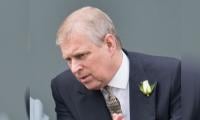 Andrew Warned: ‘You’re Gonna Add Your Own Final Nail In The Coffin Of Reputation’
Andrew Warned: ‘You’re Gonna Add Your Own Final Nail In The Coffin Of Reputation’ -
 Ben Affleck Doesn't Want His Kids To Join Showbiz: Here's Why
Ben Affleck Doesn't Want His Kids To Join Showbiz: Here's Why -
 George R.R. Martin Calls 'House Of The Dragon' S3 'not My Story'
George R.R. Martin Calls 'House Of The Dragon' S3 'not My Story' -
 Jessi Ngatikaura Gets Real About ‘identity Crisis’ From Facial Surgery
Jessi Ngatikaura Gets Real About ‘identity Crisis’ From Facial Surgery -
 Timothy Busfield Faces Potential 15-year Prison Sentence If Convicted
Timothy Busfield Faces Potential 15-year Prison Sentence If Convicted -
 Kim Kardashian Gushes Over 'baby Girl' Chicago As She Turns 8
Kim Kardashian Gushes Over 'baby Girl' Chicago As She Turns 8


